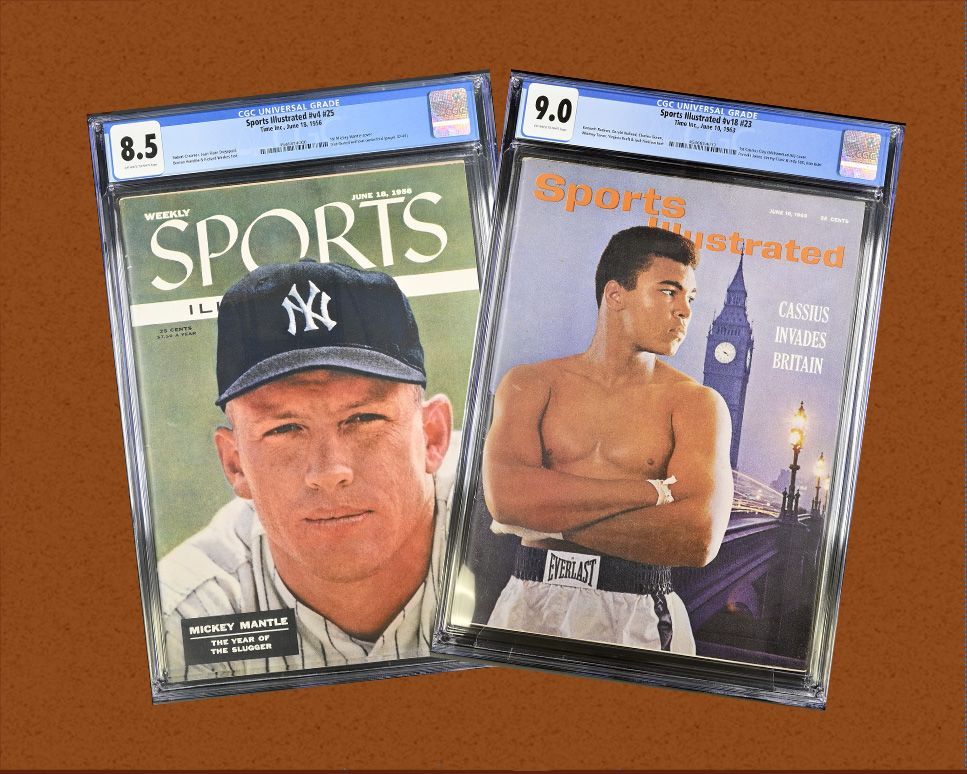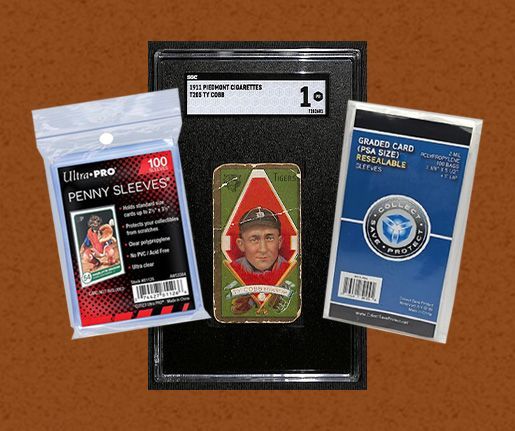What's the Real Value of 1980s Sports Cards Today?
What's the Real Value of 1980s Sports Cards Today?
If you were a child of the 1980s, chances are you still recall ripping open wax packs, blowing on the chalky gum stick, and hoping to draw your favorite player's card. For most collectors, the 80s were the heyday of childhood collecting. Packs were inexpensive, cards were ubiquitous, and the hunt kept us coming back. But three decades down the road, there is one enormous question lingering: where is the true value in 1980s sports cards today?
The short version: it's worth something, but it varies depending on the rarity, condition, and context. Let's get into it.
The "Junk Wax" Era
When people discuss 1980s sports cards, they inevitably refer to the "junk wax era." That is a label describing the sheer overproduction of cards during the mid-to-late 80s (and early 90s). Millions and millions of cards were produced by manufacturers such as Topps, Fleer, Donruss, and Score. Scarcity was no longer truly a factor like it was in the 1950s or 1960s.
Due to this excess production, the majority of the base cards produced in the 1980s aren't worth much money. You can still sell complete sets for some years for less than it costs for a good meal. That doesn't make them worthless; they have tons of sentimental value, but if you're hoping for every box in the basement to fund your retirement, you might be in for a letdown.
Where the Value Still Lives
Though most 80s cards are abundant, there remain hotspots of true value that collectors need to be aware of.
1. Rookie Cards of Legendary Players
The most valuable 1980s cards typically fall into one category: rookie cards of Hall of Famers or all-time greats. Consider:
Rickey Henderson (1980 Topps #482) - One of the most iconic and highly sought-after baseball cards of the 80s. The stolen base leader's rookie card.
Ken Griffey Jr. (1989 Upper Deck #1) – A centerpiece of current collecting and still one of the hottest rookie cards.
Michael Jordan (1986 Fleer #57) - Arguably the most famous and highly sought-after basketball card in history.
Jerry Rice (1986 Topps #161) - Rookie Card of the greatest wide receiver in NFL History.
Cal Ripken Jr. (1982 Topps Traded #98T) – The rookie of The Iron Man.
Barry Bonds (1986 Topps Traded #11T) – Controversies aside, his card is legendary.
Kirby Puckett (1984 Fleer Update #93)
Tony Gwynn (1983 Topps #482)
2. Condition and Grading
Even everyday cards from the 1980s can be valuable if they are graded highly. Companies like PSA, SGC and BGS have revolutionized the game. A card that may retail for $5 can sometimes command hundreds if it's graded a flawless 10. Why? Centering, print quality, and corners play a more significant role than ever before.
As an example, a PSA 10 Ken Griffey Jr. Upper Deck rookie will fetch thousands, whereas the same card raw may only fetch $50–$100. It all boils down to condition.
3. Short Prints and Special Sets
During the time of widespread overproduction, there were exceptions. Some updated and traded sets, as well as regional printings, were printed in lower quantities. These are still sought after today due to their relative rarity.
4. Nostalgia Value
There doesn't have to be monetary value for everything. To many collectors, the 1980s cards hold a personal value higher than dollars. Having a set you started as a child, complete or discovering that one card you gave away in junior high can be worth more than money.
What to Be Careful About:
- If you're sifting through an old box in the attic, remember these things:
- Don’t assume every old card is valuable. Age doesn’t equal rarity.
- Condition is king. Even a legendary rookie card will lose significant value if it’s creased, faded, or off-center.
- Grading isn’t always worth it. Submitting cards to PSA or another grader costs money, so it’s important to pick and choose which ones truly have grading potential.
- Check current market prices. Online marketplaces such as eBay are good gauges of what people are truly paying, not merely what sellers are asking.
How We Help Collectors at Hyper Relic
This is where we enter. At Hyper Relic, we are experts at assisting collectors, both veteran and new, through issues regarding value, condition, and how to sell. We've handled hundreds of 1980s collections, from boxes of commons to the carefully stored rookie cards.
When you submit a collection to us, we take a proper look at it and provide you with an honest assessment of what you have. Sometimes that involves showing you the hidden gems, such as a unique rookie card worthy of PSA grading; other times, it involves informing you that the majority of the collection is common but still might have value for a set collector, or as a nostalgic resale item.
We also assist in grading submissions, preparation, and consultation, so you have the best shot at a high grade. And should you be interested in selling, we offer several options to move forward: direct purchase, consignment, or accessing our extensive network of buyers through venues such as eBay.
In short: we handle your collection as if it were our own, ensuring you have the information and choices you require to maximize its potential.
Are 80s Cards an Investment?
The investment aspect is a topic of much interest in the world of collecting today. Although 1980s cards lack the rarity of previous decades, they are certainly investment-worthy if pursued deliberately.
Iconic rookies are relevant forever. As long as Griffey, Ripken, Jordan and Gwynn are adored by fans, their rookies may be worth money.
Graded cards continue to be strong. High-grade versions of key cards continue to gain value because collectors seek perfection.
Market cycles play a role. Card values ebb and flow with trends, Hall of Fame inductions, and cultural events.
For serious collectors, the best bet is quality rather than quantity. Rather than filling boxes with commons, look for a few graded rookies or classic 80s pieces.
FAQs
Are any 80s cards valuable?
Yes. Rookie cards of superstars such as Michael Jordan., Rickey Henderson., Ken Griffey Jr., Bo Jackson., Cal Ripken Jr., and Tony Gwynn can command good value, particularly in top-graded condition.
How do I know if my old cards are valuable?
Check the player, condition, and recent online sales. High-condition graded cards typically command top prices.
How do I determine if my card is rare?
Rarity is found through low print runs, special sets, or mint-condition cards. Most 80s commons are not rare, but rookies, short prints and GEM-MT copies are.
Where's the true value in 1980s sports cards today, then? It's not in the piles of oversupplied commons but in the exceptional rookies, high-grade copies, and the nostalgia they evoke.
If you've got 80s cards just lying around and want to know what they're worth, we're here to assist. Hyper Relic is passionate about immersing yourself in collections, searching behind the scenes, and taking collectors through the process. You need to sell, want to be graded, or simply know more about your cards? Whatever your goal, we are here to be your partners in collection.
All in all, 1980s cards may not turn out to be financial jewels, but they are certainly a constituent of the soul of the hobby.




